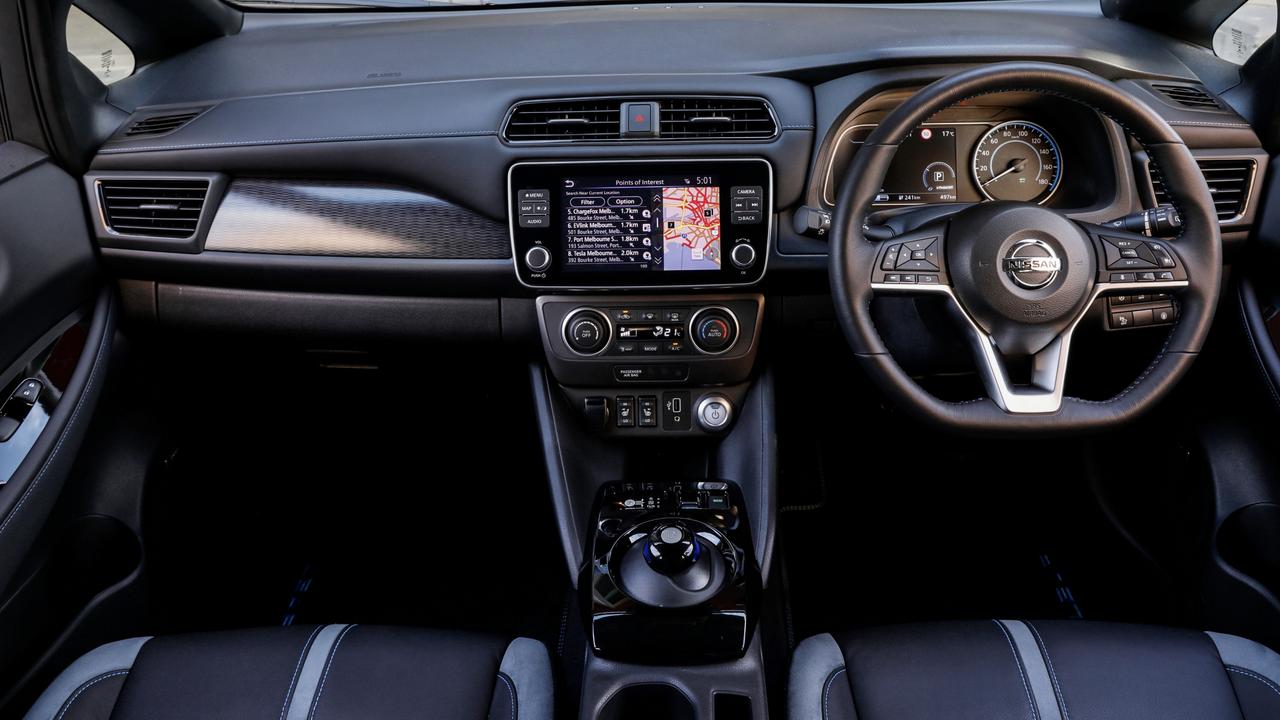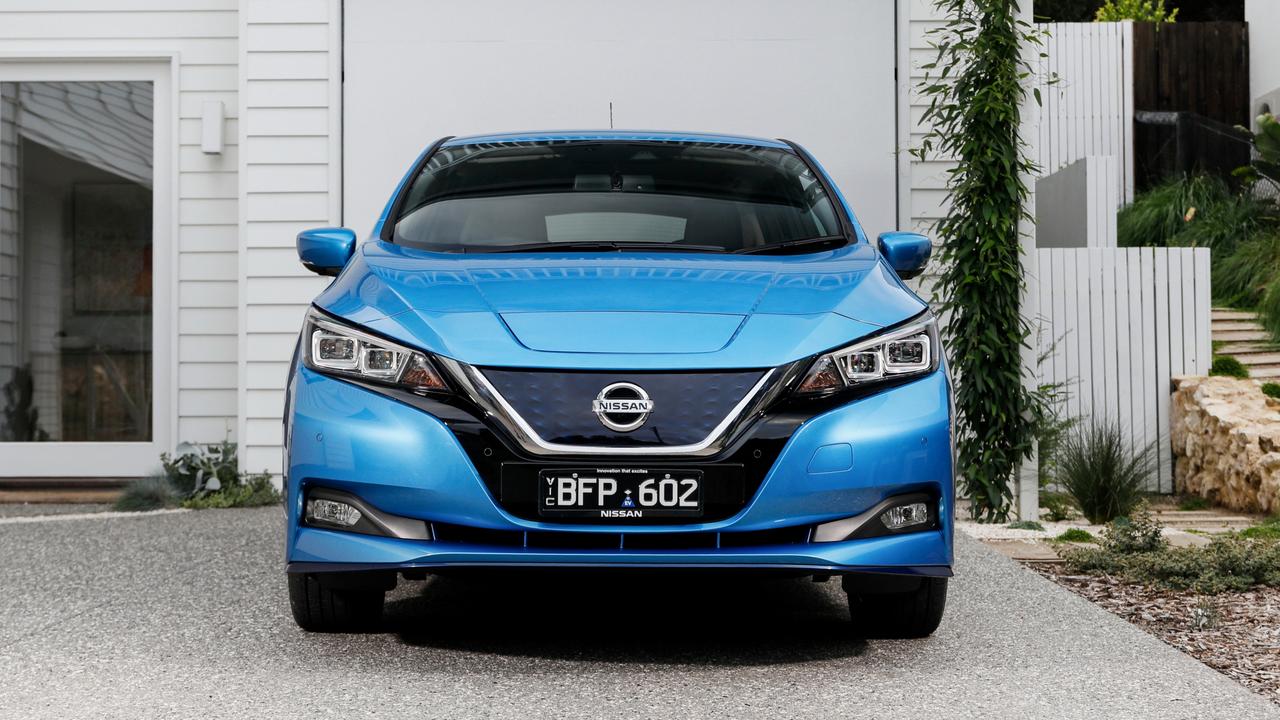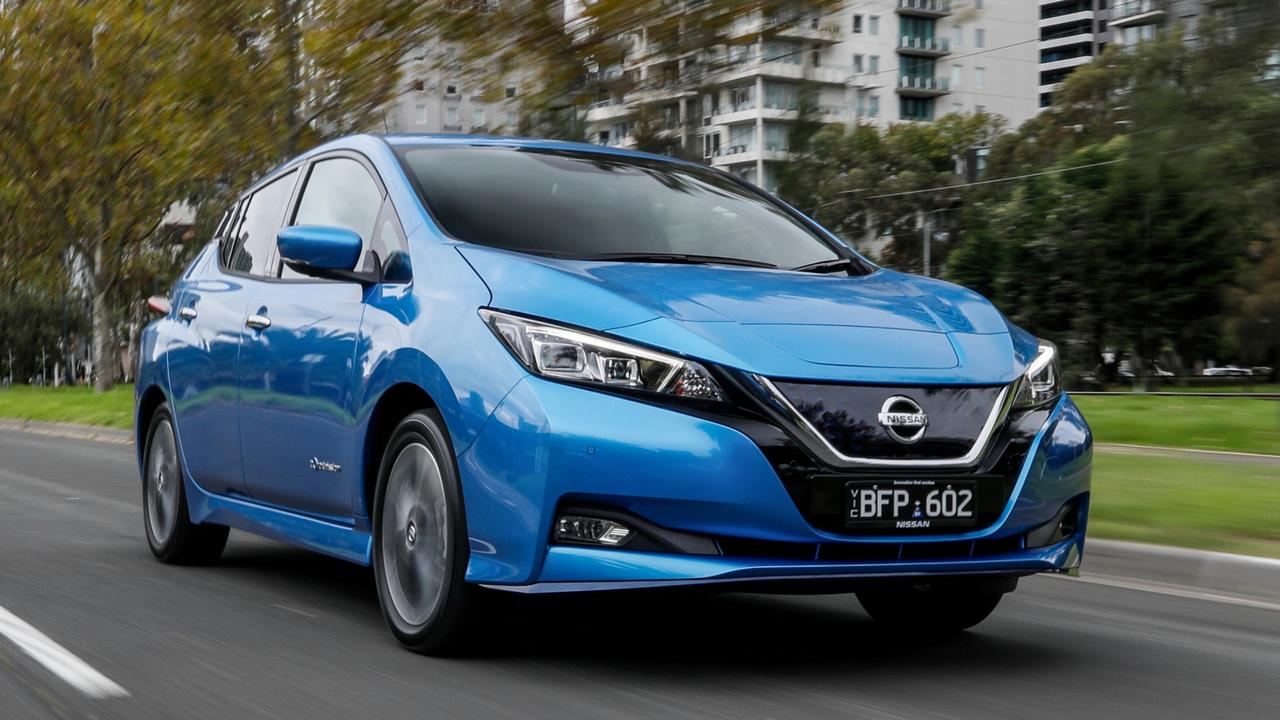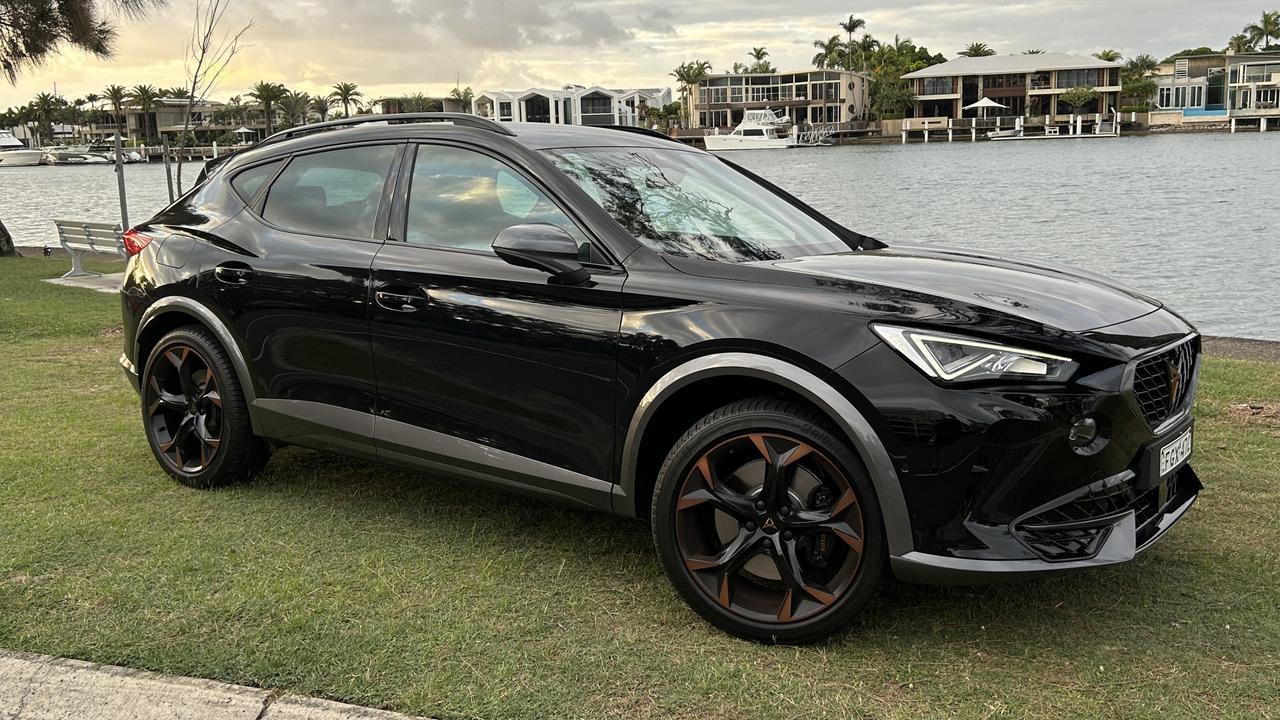Nissan Leaf e+ could become an energy saviour for households
Improving the range and capacity of the battery puts Nissan’s Leaf e+ electric vehicle at the forefront of future household technology.

Business
Don't miss out on the headlines from Business. Followed categories will be added to My News.
More eyes are turning toward an electric transport future.
Interest in the alternative power source is rapidly growing. While the take-up remains as slow as the infrastructure, early adopters are singing the praises.
Nissan’s Leaf has been around for nearly a decade, yet it now boasts the range and standout technology to make it an alluring household option. The recently released e+ iteration was put to the family test.

FIRST IMPRESSIONS
KEL: Everything looks familiar, is this a basic update to keep up with the opposition?
GRANT: Nissan addresses some key shortfalls of the previous model, most notably a range boost. Fully charged it can now travel about 350km in the real world – Nissan claims 385km.
KEL: That’s about 110km better than the old model which we tested over a few months. Taking a trip used to give me next-level anxiety until I was within 10 minutes from home.
GRANT: Interesting, I get the same feeling every time you go shopping. But this new e+ has a bigger battery, rides higher off the bitumen and it’s faster.
KEL: I’m guessing the extra wattage attracts a premium.
GRANT: The increase is about $10,000, but for those happy with a range of 250km they can stick with the 40kW version for $54,194 drive-away.

THE LIVING SPACE
KEL: Features look pretty similar, like the eight-inch touchscreen that has Apple CarPlay and Android Auto, Bose stereo, as well a leather trim. It’s basic and easy to use.
GRANT: Just because it’s an electric car doesn’t mean it has to be complicated. Everything operates like a conventional car, just the gear shifter is more mouse-like than a conventional T-bar.
KEL: The styling is quite dark. Blue stitching provides some pizzazz yet it’s essentially black on black.
GRANT: Typical Japanese function over flare. But what excites me most is the Leaf’s ability to be used not only a car but also a battery source. This has bidirectional capacity.
KEL: You’ve been claiming this is the future for a while, the ability to use the car battery to power the house.
GRANT: Absolutely. We’ve installed solar with a hybrid inverter which will allow for a battery … the Leaf is the only car currently available which sends power both ways. We can use the sun to add power into the battery during the day, then use it at night to power the home.
KEL: But surely that would drain the battery and we’d have no car to drive in the morning?
GRANT: This is a 62kWh battery. The Tesla Powerwall 2 is 13.5kWh, SunGrow is 12.8 while and LG Chem is 6.5. The bigger batteries are more than $10k, and total cost at the moment for the Powerwall is $12,750.
KEL: I’d like to see it first-hand to ensure it works, but it sounds like an interesting deal.
GRANT: The Leaf has the ability to change perspectives, it’s not just a car but a mobile storage system. You’d have to crunch the numbers, but ultimately I think it would pay itself off in five years using solar – not paying fuel or electricity bills.

THE COMMUTE
KEL: The additional range makes the Leaf far more useful for those in regional areas.
GRANT: For sure, those living in metro areas often are lucky to travel more than 40km to and from work each day.
KEL: Electric power is always quick off the mark. I liked how quickly it responded.
GRANT: That larger capacity battery uses a different design compared to the old model which delivers a “higher energy density”. All I hear there is it’s punchier, and it’s one second faster to 100km/h from standstill with 50 additional kilowatts and 20 more Newton metres of torque.
KEL: Using the e-pedal can be interesting. I had someone ask me about one pedal driving, but this still has a brake.
GRANT: The one-pedal concept they talk about is lifting off the throttle and the Leaf slows dramatically. Judicious drivers quickly learn when to lift and slow without using the brake – and using that kinetic energy to put power back in the battery.

THE SHOPPING
KEL: Light steering makes parking easier, and there was reasonable boot space to handle the groceries. It also generates a futuristic sound at slow speeds to warn pedestrians.
GRANT: With the Bose sound system there is still that subwoofer in the boot which makes for an awkward load space. When the rear seats fold 60-40 it’s also a stepped load space which can be painful.
KEL: I’m also not a fan of the foot-operated park brake.
GRANT: Agreed, while useful to improve console space it’s clunky.

SUNDAY RUN
KEL: Given the limited charging stations, heading for the countryside needs careful planning.
GRANT: Charging station availability is improving. There are a few fast chargers around which can fill the battery in about 45 minutes. Use a standard household 10-amp power point and it takes 32 hours.
KEL: That sounds pretty painful, although we didn’t have any issues treating it like a mobile phone – as soon as you get home, plug it in.
GRANT: Most owners will pay about $1500 to install a garage wallbox that can do the job in about 11.5 hours. Depending on what infrastructure you have now, the bidirectional charging could be about $8000.

THE FAMILY
KEL: Fitting three kids across the back seat wasn’t a challenge.
GRANT: Nothing much has changed in this realm, it’s still a five-door hatch with five seats, so certainly good for a growing brood. Although in the back there are no air vents or USB ports.
KEL: Safety seems pretty good with blind-spot warning, rear cross-traffic alert, auto braking and parking sensors at either end, as well as that awesome 360-degree camera.
GRANT: Australia’s safety authority gave the previous model five stars back in 2018. It’s missing emergency braking in reverse and cross junction warning functionality that’s slowly becoming commonplace.
KEL: Are the running costs lower than a petrol car?
GRANT: We averaged 17.4kWh/100km. That probably means about $5 per 100km – making the most of solar charging during the day it would be between $1-$2. Most Nissan dealers can handle the servicing, and maintenance is cheap at just above $1400 for five years.

THE VERDICT
KEL: Having lived with a Leaf last year, this e+ is a far more compelling proposition. The extra range is a pivotal turning point for households, although the price increase curbs my enthusiasm.
GRANT: Prepare the spreadsheet, I’m getting my geek on. Those with a decent solar system have the capacity to go off grid, but you would have to do the numbers – not just the price of the car but also infrastructure required. It’s a battery and car in one, bring on the future. ★★★★
Originally published as Nissan Leaf e+ could become an energy saviour for households







